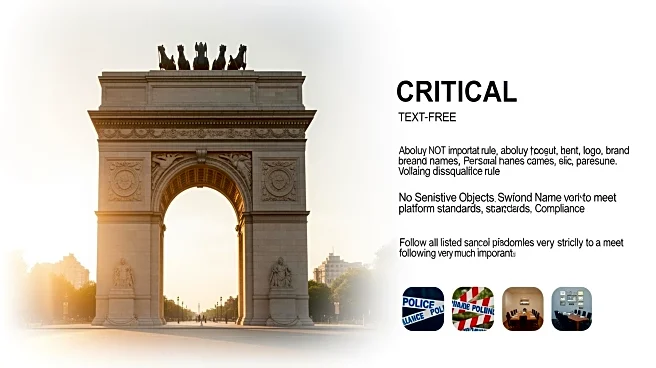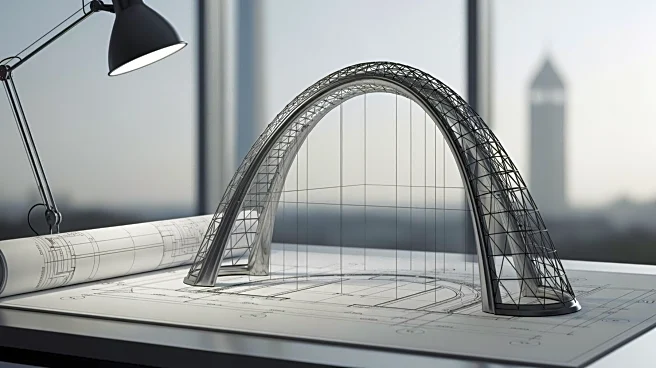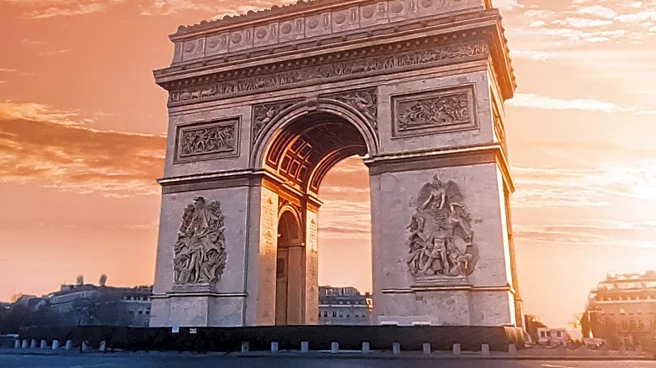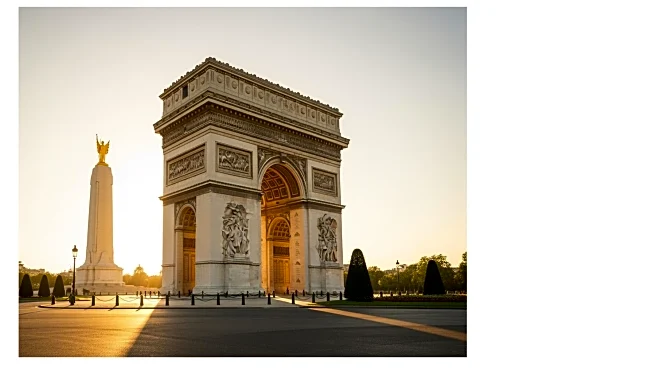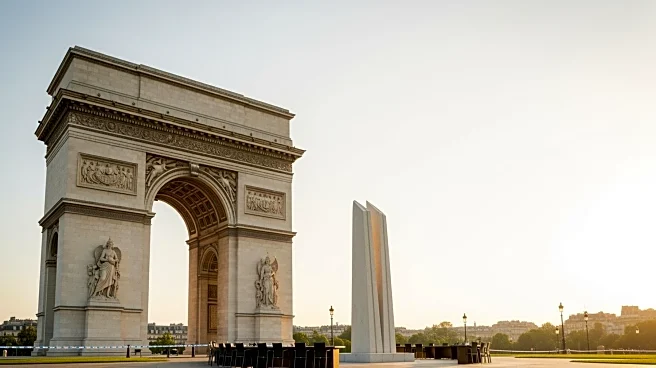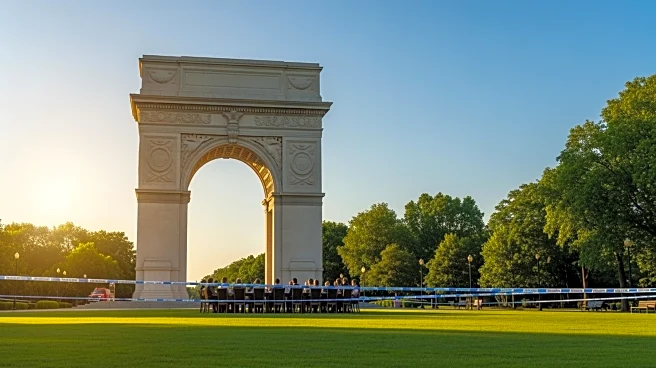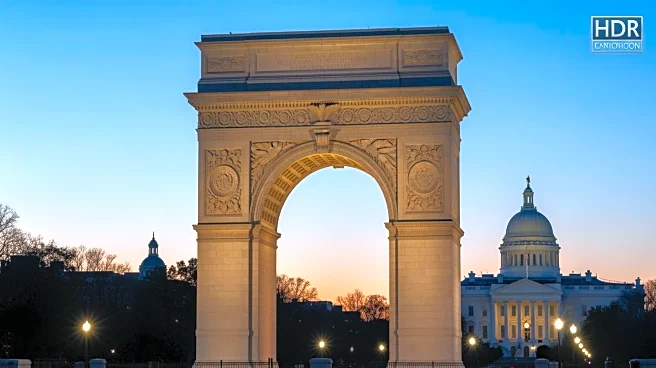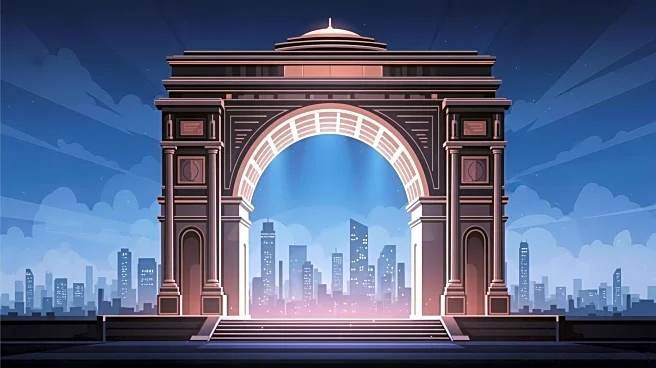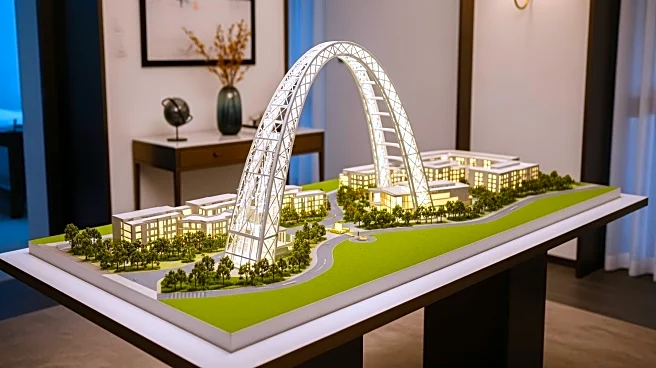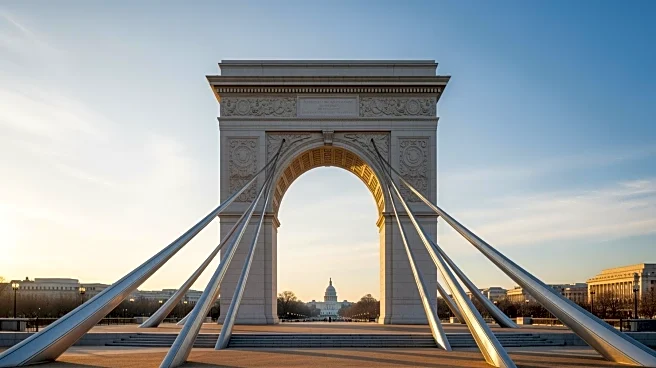What's Happening?
President Trump has unveiled plans to construct a triumphal arch in Washington, D.C., to commemorate the United States' 250th anniversary. The proposed arch, which resembles the Arc de Triomphe in Paris,
would be located at Memorial Circle at the end of Arlington Memorial Bridge, near the Lincoln Memorial. The design includes two eagles and a golden, winged angel, which Trump identified as Lady Liberty. The announcement was made during a White House fundraising dinner, where Trump also discussed plans for a new White House ballroom. He expressed gratitude to donors for their contributions, suggesting that leftover funds might be used to finance the arch.
Why It's Important?
The proposed triumphal arch represents a significant cultural and historical gesture, aiming to celebrate the nation's milestone anniversary. If realized, it could become a prominent landmark in Washington, D.C., enhancing the city's historical landscape and potentially boosting tourism. The project reflects President Trump's interest in monumental architecture and his desire to leave a lasting legacy in the nation's capital. The involvement of corporate executives and donors indicates potential private sector support, which could influence public-private partnership models for future infrastructure projects.
What's Next?
The next steps involve securing funding and approval for the construction of the arch. The proposal may face scrutiny from city planners, historians, and the public, who might debate its design, location, and cultural significance. Stakeholders, including government officials and community leaders, will likely engage in discussions about the project's feasibility and impact on the surrounding area. The outcome of these deliberations will determine whether the arch becomes a reality in time for the 250th anniversary celebrations.
Beyond the Headlines
The proposal raises questions about the role of monumental architecture in national identity and the ways in which leaders use such projects to shape historical narratives. It also highlights the intersection of politics, culture, and urban planning, as decisions about public spaces often reflect broader societal values and priorities. The arch could spark discussions about the preservation of historical sites and the balance between new developments and existing landmarks.
